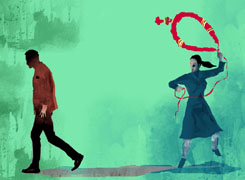Ramalingam Kalirajan |10017 Answers |Ask -Follow
Mutual Funds, Financial Planning Expert - Answered on May 17, 2024
He has an MBA in finance from the University of Madras and is a certified financial planner.
He is the director and chief financial planner at Holistic Investment, a Chennai-based firm that offers financial planning and wealth management advice.... more

I am 50.5 yrs working in PSU. I have 3.5 Cr in PF/PPF , 1Cr in Shares/Mutual Fund/ULIP. I target 3L/month when I retire in 2033. What to do ???
As you approach retirement age, it's essential to reassess your financial portfolio and make strategic decisions to ensure a comfortable and secure retirement. Let's analyze your current financial situation and explore potential avenues to achieve your retirement income target.
Your proactive stance towards retirement planning reflects a commendable commitment to securing your financial future and maintaining a desirable standard of living post-retirement.
Understanding Your Financial Portfolio
Current Assets:
Provident Fund (PF) and Public Provident Fund (PPF): Rs. 3.5 Crores
Shares, Mutual Funds, and ULIPs: Rs. 1 Crore
Retirement Income Target:
Monthly Income Target: Rs. 3 Lakhs
Retirement Year: 2033
Assessing ULIPs as an Investment Option
Disadvantages of ULIPs:
High Charges: ULIPs often come with substantial charges, including premium allocation charges, policy administration fees, and fund management expenses, which can erode potential returns over time.
Complex Structure: The intricate design of ULIPs may make it challenging for investors to understand the underlying costs and benefits associated with the investment.
Recommendation: Withdraw and Reinvest in Mutual Funds
Considering the disadvantages associated with ULIPs, it may be prudent to withdraw your investments and reinvest the proceeds in mutual funds.
Mutual funds offer greater transparency, lower costs, and a more diversified investment approach, potentially leading to higher returns over the long term.
Crafting a Retirement Investment Strategy
Portfolio Reallocation:
Allocate a significant portion of your retirement corpus towards diversified equity mutual funds, considering your long investment horizon and risk appetite.
Balance your portfolio with debt mutual funds to mitigate risk and ensure stable returns, particularly as you approach retirement age.
Systematic Withdrawal Plan (SWP):
Implement a systematic withdrawal plan (SWP) from your mutual fund investments to generate a steady stream of income post-retirement, aligning with your desired monthly income target.
Conclusion: Securing Your Retirement Future
By withdrawing your investments from ULIPs and reinvesting in mutual funds, you can optimize your retirement portfolio for long-term growth and income generation. Additionally, implementing a systematic withdrawal plan will help you achieve your retirement income target while maintaining financial stability and security.
Best Regards,
K. Ramalingam, MBA, CFP,
Chief Financial Planner,
www.holisticinvestment.in
You may like to see similar questions and answers below
Ramalingam Kalirajan |10017 Answers |Ask -Follow
Mutual Funds, Financial Planning Expert - Answered on May 07, 2024
Ramalingam Kalirajan |10017 Answers |Ask -Follow
Mutual Funds, Financial Planning Expert - Answered on Jun 25, 2024
Ramalingam Kalirajan |10017 Answers |Ask -Follow
Mutual Funds, Financial Planning Expert - Answered on Jul 10, 2024
Ramalingam Kalirajan |10017 Answers |Ask -Follow
Mutual Funds, Financial Planning Expert - Answered on Aug 30, 2024
Prof Suvasish Mukhopadhyay |2742 Answers |Ask -Follow
Career Counsellor - Answered on Jul 31, 2025
Prof Suvasish Mukhopadhyay |2742 Answers |Ask -Follow
Career Counsellor - Answered on Jul 31, 2025
Dr Nagarajan J S K |2116 Answers |Ask -Follow
NEET, Medical, Pharmacy Careers - Answered on Jul 31, 2025
Dr Nagarajan J S K |2116 Answers |Ask -Follow
NEET, Medical, Pharmacy Careers - Answered on Jul 31, 2025
Dr Nagarajan J S K |2116 Answers |Ask -Follow
NEET, Medical, Pharmacy Careers - Answered on Jul 31, 2025
Dr Nagarajan J S K |2116 Answers |Ask -Follow
NEET, Medical, Pharmacy Careers - Answered on Jul 31, 2025
Dr Nagarajan J S K |2116 Answers |Ask -Follow
NEET, Medical, Pharmacy Careers - Answered on Jul 31, 2025
Nayagam P P |9752 Answers |Ask -Follow
Career Counsellor - Answered on Jul 31, 2025
Nayagam P P |9752 Answers |Ask -Follow
Career Counsellor - Answered on Jul 31, 2025
Ravi Mittal |629 Answers |Ask -Follow
Dating, Relationships Expert - Answered on Jul 31, 2025





















